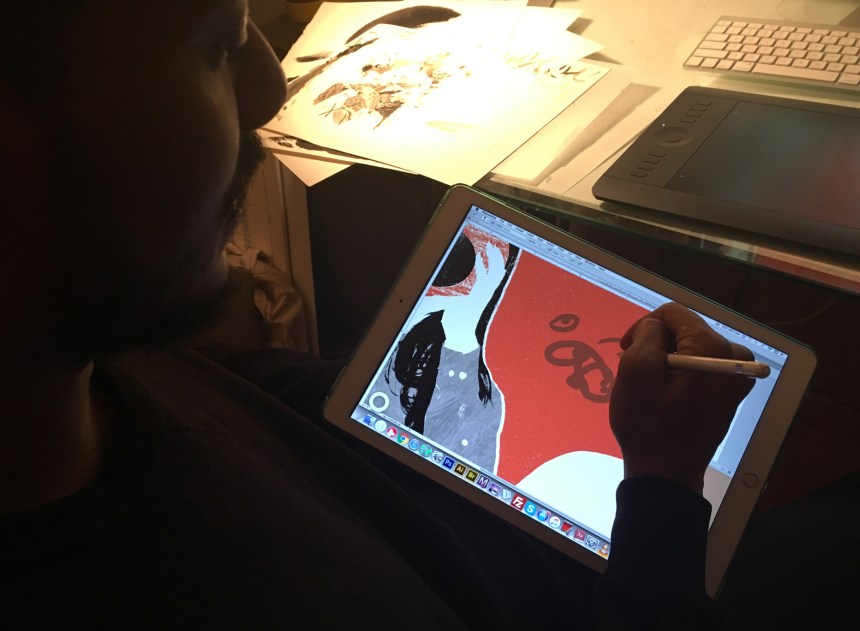MAKERS: Cannaday Chapman, Illustrator

I asked Cannaday Chapman if he thought of himself as an “Illustrator” or an “Artist”, and without skipping a beat he said: “Illustrator”. I nodded quizzically as I looked over all of the hand-drawn and hand-painted scraps of paper around the room. While Chapman does indeed “illustrate” many things – in particular articles for magazines, newspapers, greeting cards, etc. – I didn’t expect him to answer so quickly, so emphatically. Looking at his finished work, you might assume it is all done digitally, but his technique heavily relies on analog methods too – in particular the fine art skills and traditional tools of a draftsman. He carefully hand-draws and hand-paints elements of his images, all of which come together in a final, digital format.

Above the desk in his midtown loft are works by Egon Schiele, René Gruau, and soon we get to talking about David Hockney – like Hockney, Chapman’s compositions are mostly figurative (many of the subjects are from his personal life), utilize broad planes of color, and demonstrate a keen sense of draughtsmanship.


Chapman loves pen and ink, and uses traditional nibs and sumi-e ink to render bits and pieces of his compositions. He also creates most of the textures seen in his final images by hand using inks, washes, and paints. These scribbles and daubs are then scanned in and filed in his digital library to grab when he needs them.

He also occasionally draws digitally, using Astropad, an app that allows you to turn an iPad Pro into a Cintiq – in plain English, he can draw directly on the surface of the iPad while it renders onto the screen above – or he can draw in the next room, or even downstairs on the couch.

To get a good idea of his process, here is a dissection of how he built the portrait “Madonna 1984”. He started by drawing the image onto heavy-weight paper with black ink.

As you can see, the hair and bracelets are drawn separately, then all the drawings are scanned in — the finished image (like most of his work) retains much of the hand-drawn qualities of the originals.

Chapman’s other portraits of celebrities were created using similar methods.

I asked Chapman where he draws inspiration: “I get inspired by the experiences I’ve had with people. Some of my art is inspired by friends and ex-girlfriends. ‘In My Bed’ was inspired by an ex that liked to spend most of her day in bed.”

“In My Bed”
“I’m also inspired by the places I’ve been. The piece ‘Taisho’ was inspired by my time visiting Japan and eating ramen with friends.”

“Taisho”
Chapman studied at the School of Visual Arts in New York, and now works for American Greetings in addition to working professionally as a freelance illustrator. He has shown his work in galleries around the country as well as in Italy – and some of his illustrations were recently on exhibit at the Root Cafe in Lakewood.

“Trust Issues”

“Abby & Max”

“Getting Ready to Go Out”

“Novelty”

“Bar Scene”

“R. Porter”
Chapman is one of those artists that is hard to pin down, but there is something refreshing about his process, his eagerness to embrace new technology as well as traditional tools. I think the resulting images not only demonstrate a comfortable mix, but reflect the needs of our time. In the immortal words of Mr. Hockney, “If we are to change our world view, images have to change. The artist now has a very important job to do. He’s not a little peripheral figure entertaining rich people, he’s really needed.”
To see more of Cannady Chapman’s work, visit www.cannadaychapman.com. And to buy his prints, take a look at his Etsy shop.


You must be logged in to post a comment.